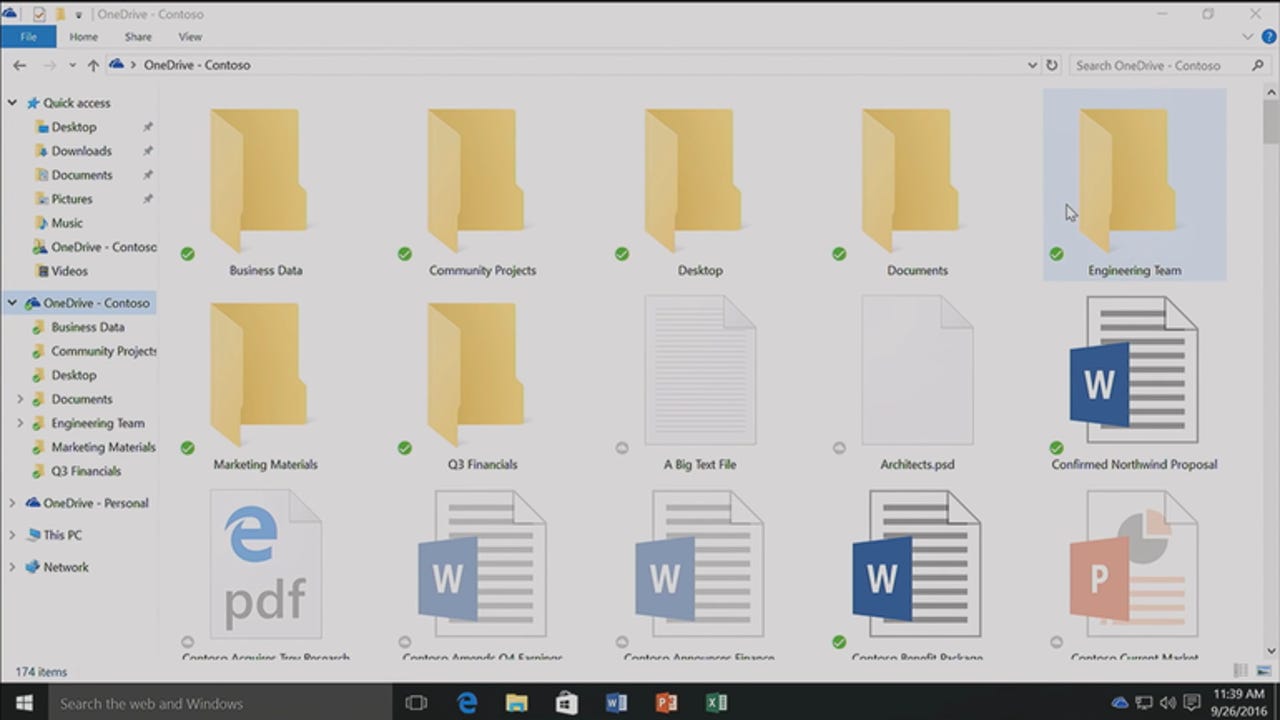New Files On-Demand feature brings OneDrive placeholders back to Windows 10


Microsoft showed off the forthcoming return of OneDrive placeholders to Windows 10 at its Ignite conference earlier this year.
The most eagerly awaited new feature in the Windows 10 Fall Creators Update isn't new at all.
see all of ed bott's Windows 10 Tips
OneDrive Files On-Demand, which Microsoft showed off during the Day 2 keynote address for its Build 2017 developers conference today, marks the return of a feature that was unceremoniously yanked in late 2014, shortly after the first preview releases of Windows 10 were delivered to members of the Windows Insider Program.
That feature, called OneDrive placeholders, debuted in Windows 8.1. It worked almost exactly like this description of the new Files On-Demand feature, taken from a post on the OneDrive blog today:
[Y]ou can access all your files in the cloud without having to download them and use storage space on your device. You don't have to change the way you work, because all your files - even online files - can be seen in File Explorer and work just like every other file on your device.
In a blog post more than two years ago, Microsoft laid out a roadmap for OneDrive that included a unified sync client for the consumer and business versions of OneDrive as well as selective sync capabilities for both cloud storage services. Those sync features are now available in shipping versions of Windows and on other platforms as well.
But after that early 2015 discussion, the placeholders feature appeared to drop off the OneDrive roadmap until its surprise reappearance today.
The Files On-Demand feature will work with File Explorer in the Windows 10 Fall Creators Update, as well as with file pickers available in desktop programs and Store apps running on that release. And unlike the Windows 8.1 version, it will work with the consumer OneDrive service, OneDrive for Business, and SharePoint sites for Microsoft Teams.
A new cloud icon in the Status column will identify files that are available in the cloud but haven't been synced locally.
The cloud icon will identify whether files are online only or synced locally. (screenshot via Microsoft)
You can, of course, right-click a file or folder and select Always Keep On This Device to make those files and folders available for offline use.
Double-clicking an online-only file will download it automatically and open it in the associated app. Files opened in this fashion will remain available for offline use.
Microsoft said today that the Files On-Demand feature will appear in Windows Insider Preview builds "early this summer" and will be publicly available with the Windows 10 Fall Creators Update, which is scheduled to arrive later this year, probably in October.
In today's announcement, Microsoft also highlighted offline support for OneDrive files on mobile devices. The OneDrive Offline Folders feature is now available on Android devices to Office 365 Personal and Home subscribers and OneDrive business accounts.
Offline Folders support is already in the Android OneDrive client. (screenshot via Microsoft)
The company said Offline Folders support will roll it out to the OneDrive client on iOS "in the next few months." The iOS OneDrive client already supports attaching OneDrive files in iMessage.